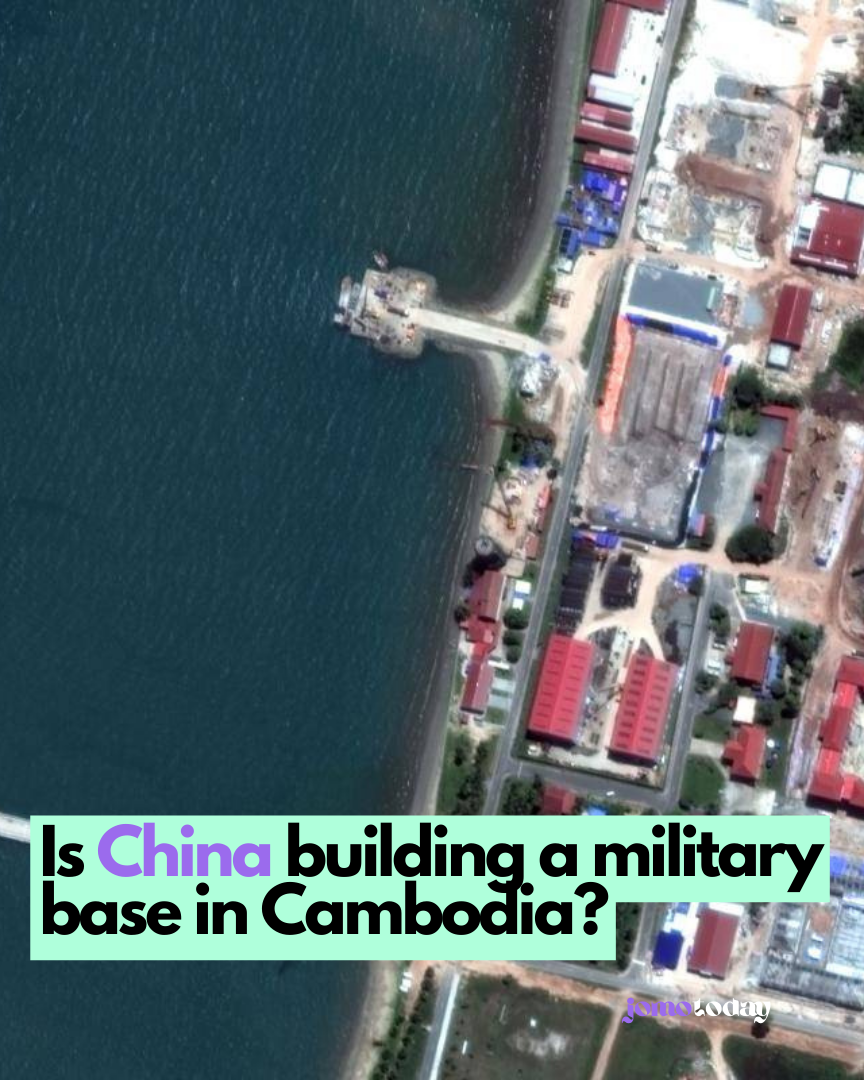Over the span of four years since initial revelations from US intelligence to The Wall Street Journal about an agreement permitting Beijing military access to Cambodia’s Ream naval base, analysts have been closely monitoring the evolution of what many believe could become China’s next overseas military facility.

Recent satellite images from Maxar Technologies unveil a striking transformation underway at the Cambodian naval base, situated near Sihanoukville on the Gulf of Thailand. This project, funded by China, is extending Beijing’s military reach into the contentious waters of Southeast Asia.
Latest images from June showcase an array of Chinese-funded construction activities. These images depict land clearance operations, land reclamation efforts, the construction of multiple new structures, roads, and notably, a substantially larger pier compared to the base’s original jetty. New fencing lines the base’s perimeter, while structures funded by the US have been demolished and replaced.
Over the past 18 months, Cambodian Prime Minister Hun Sen has reportedly allocated 157 hectares for the establishment of air defenses, general command facilities, and a naval radar installation near the base. Cambodian state media has further reported plans for new storage facilities, a hospital, drydocks, and slipways at Ream.
Hun Sen, who has held power since 1998, has shifted his stance towards China, previously marked by hostility due to its support of the Khmer Rouge in the 1970s. With waning US influence in Cambodia and his own increasingly autocratic tendencies, Hun Sen has fostered closer ties with Beijing, which reciprocated with investments and economic incentives, particularly in Sihanoukville. Cambodia’s reciprocal gesture includes diplomatic support for China. This growing proximity has led to an “iron-clad” relationship between Phnom Penh and Beijing, as described by Sebastian Strangio, Southeast Asia editor of The Diplomat.
During ASEAN summits, Cambodia, led by Hun Sen, has played a role in diluting ASEAN statements critical of China’s conduct in the South China Sea. In recent years, Cambodia has even vetoed proposals for joint military exercises by ASEAN members in the South China Sea.
While both governments now maintain that the Ream base redevelopment is part of a broader effort to modernize the Royal Cambodian Navy and promote infrastructure development, satellite imagery and statements from officials hint at a potentially larger role for China beyond Cambodia’s navy enhancement.
Despite Cambodia’s constitutional prohibition on foreign military bases, statements from Cambodian and Chinese officials have indicated an expanded role for Beijing. Admiral Vann Bunlieng of the Royal Cambodian Navy confirmed Chinese involvement in the developments at Ream in 2020 after initial denials. Cambodia’s defense minister, Tea Banh, later stated that Beijing was assisting with the base’s development “with no strings attached.”
The emergence of a new pier at Ream is of particular significance. This year’s construction closely resembles the pier at China’s sole overseas base in Djibouti. The new Ream pier might eventually accommodate larger vessels, potentially serving as a support hub for the Chinese navy.
The establishment of a Chinese naval base at Ream holds ramifications for Southeast Asia’s balance of power. While the PLAN is the world’s largest navy, it lacks overseas bases in the Indo-Pacific, unlike its main competitor, the US Navy. Even a modest logistics center at Ream could provide Chinese warships greater range and a permanent presence in the Gulf of Thailand and Southeast Asian waters. Although its immediate impact on the balance of power might be limited due to China’s existing fortified islands in the South China Sea, the Ream base’s location in the heart of the ASEAN region poses a challenge.
Bill Hayton, Associate Fellow in the Asia-Pacific Programme at Chatham House, suggests that while Ream may not immediately alter the balance of power, its position next to Vietnam and near Thailand, Malaysia, and Singapore creates a platform for China to expand its regional influence.
For Vietnam, the Ream base introduces a “two-front dilemma,” according to Hayton, requiring vigilance over developments in the Gulf of Thailand and the South China Sea.
A Chinese military presence at Ream would likely trigger a negative response from the US. The presence of a Chinese base in Cambodia would reflect declining US influence in a region that the Biden administration has identified as strategically significant.
Read more: David Beckham Cops Huge Backlash For Referring To The England Women’s Team As ‘Girls’






Leave a Comment